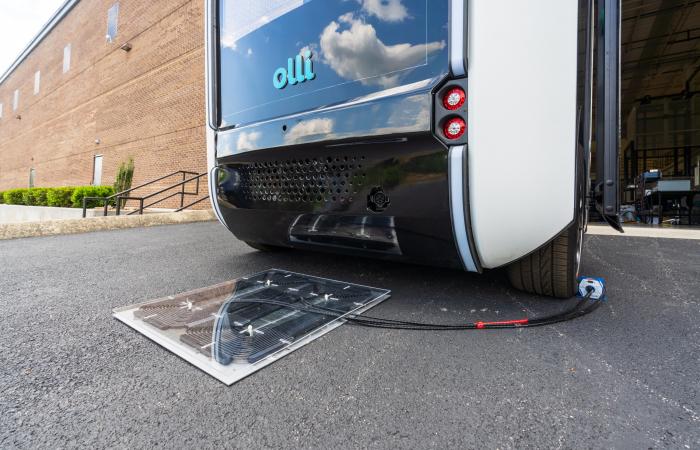
A wireless charging system that researchers have now tested on an autonomous electric vehicle could herald a future where automated cars can recharge as they drive on special highway lanes.
Scientists at Oak Ridge National Laboratory have worked for years now on wireless charging technology that can make powering an electric vehicle (EV) just as easy, or easier, than filling up a car with gas. An equipped EV charges hands free, safely and efficiently, while parked over a charging pad.
The researchers tested their technology on an autonomous 3D-printed electric shuttle, the Olli, from Phoenix, Arizona-based motor vehicle company Local Motors. The new charging system includes both wireless and wired charging, so the bus can connect to either DC or AC power, respectively. Wireless charging across a six-inch air gap demonstrated roughly 96% power transfer efficiency.
“Our wireless charging technology has matured enough that we can design and install equipment for a custom environment such as on the Olli, to give vehicle manufacturers the flexibility they need to accelerate toward a decarbonized, electrified transportation future,” Madhu Chinthavali, a research scientist at Oak Ridge National Laboratory, said in a statement.
The scientists have also tested a 120-kilowatt wireless charging system that can operate at 97% efficiency. They aim to develop systems up to 270 kilowatts to help recharge passenger vehicles in 15 minutes or less.
“Once you get to these higher power levels to enable fast charging, you especially don’t want people handling the heavy cables typically required,” Burak Ozpineci, who heads Oak Ridge National Laboratory’s vehicle and mobility systems research section, said in a statement. “With wireless technology, you wouldn’t have to remember to plug in your vehicle at home, and it’s always topped off. You just park it in the garage and it’s done. The same with charging pads at workplaces or at extreme-fast wireless charging stations.”
In addition, the researchers seek to engineer dynamic wireless charging systems that can recharge moving vehicles. Their goal is develop a 200-kilowatt system that can quickly charge vehicles at highway speeds as they roll over specially equipped roadways. This could lead to highway lanes or on- and off-ramps embedded with charging pads so vehicles could enter and exit highways with the same battery charge.
“What if you have an EV and never have to worry about having enough of a charge to go anywhere you like?” Ozpineci said in a statement. “We can accomplish that with dynamic wireless charging.”

